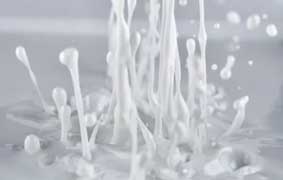German chemical firm BASF has extended its series of Licity anode binders for Li-ion battery manufacturing. The second-generation styrene-butadiene rubber (SBR) binder Licity 2698 X F facilitates the use of silicon contents exceeding 20%. In addition to the established properties of the Licity product family, this binder enables higher capacity, increased number of charge/discharge cycles and reduced charging times, it adds.
Additionally, Licity 2698 X F can be manufactured according to the biomass balance approach. In this approach, biomass is fed into BASF’s production process and allocated to the binder. BASF adds it is committed to aligning economic goals with environmental and social responsibility, from the raw materials used for Licity binders up to their delivery.
“The transformation of the market from combustion engines to battery electric vehicles is becoming more tangible. Hurdles such as low range and long charging times can be overcome by using our new binder Licity 2698 X F,” explains Thorsten Habeck, Business Director Fiber Bonding Dispersions & Resins EMEA at BASF.
Licity binders are designed to overcome the limits of lithium-ion batteries. They are waterborne binders with high colloidal stability that are very compatible with co-binders like CMC.
BASF adds the Licity binders are characterised by excellent processability and superior coating behavior. Furthermore, they have outstanding mechanical and electrochemical properties.

